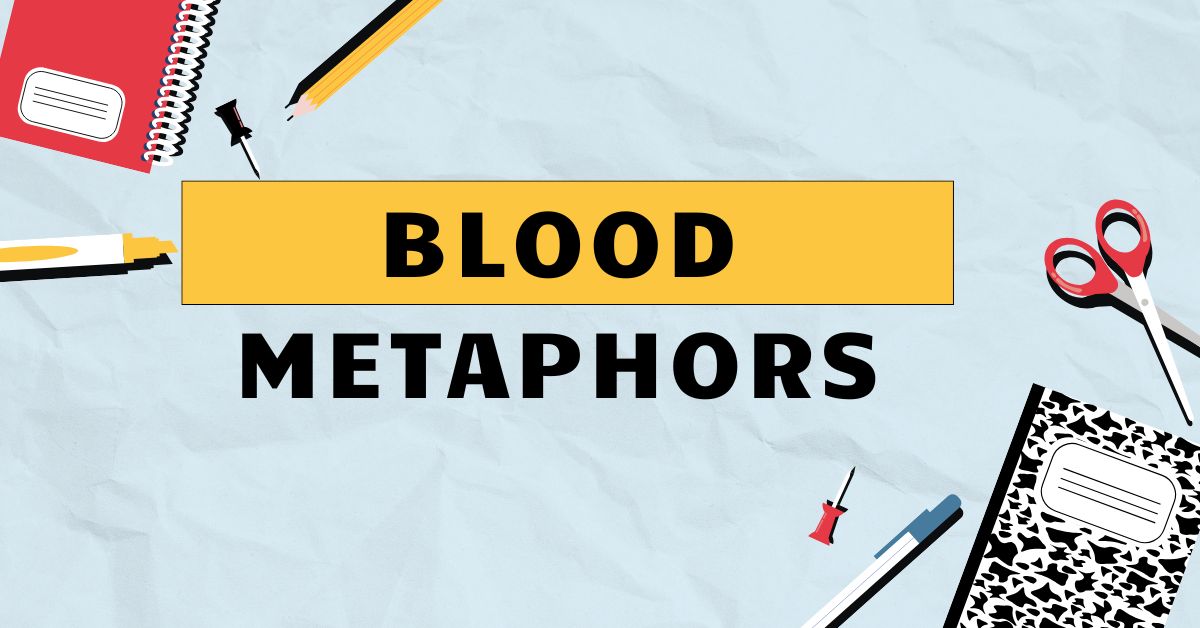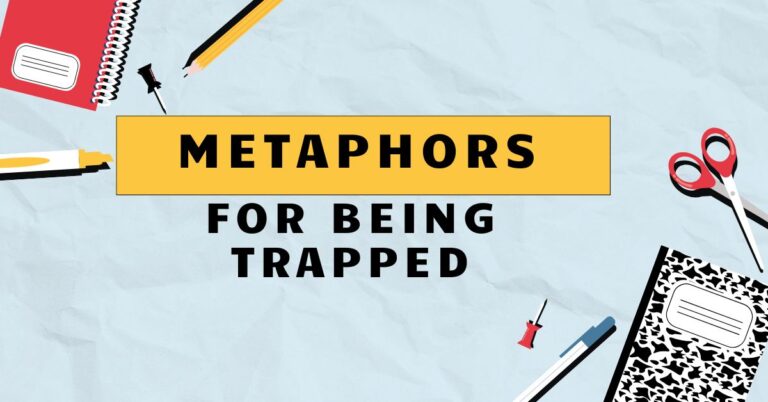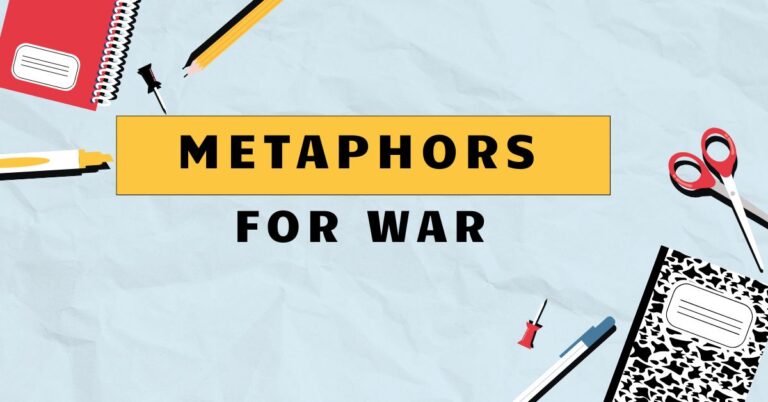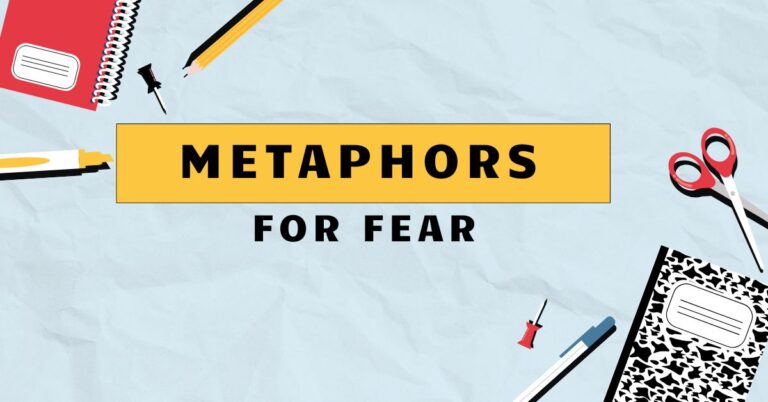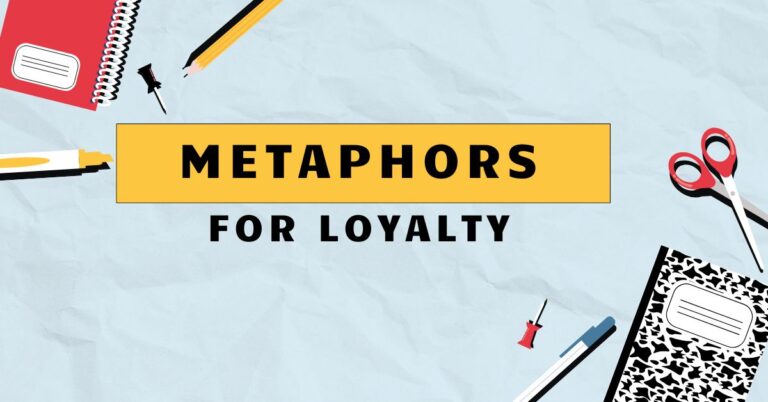49 Blood Metaphors: Enhancing English Expression
Understanding metaphors for blood is crucial for grasping the nuances of English literature, poetry, and everyday language. These metaphors enrich our communication by adding layers of meaning and emotional depth.
This article explores the various ways blood is used metaphorically, providing learners of all levels with a comprehensive guide to its usage and significance. By mastering these concepts, you can significantly improve your comprehension and expressive abilities in English, allowing for more vivid and impactful communication.
Table of Contents
- Introduction
- Definition of Blood Metaphors
- Structural Breakdown
- Types and Categories of Blood Metaphors
- Examples of Blood Metaphors
- Usage Rules for Blood Metaphors
- Common Mistakes
- Practice Exercises
- Advanced Topics
- FAQ
- Conclusion
Definition of Blood Metaphors
A blood metaphor is a figure of speech that uses the word “blood” or related concepts to represent something else, creating a connection between the literal meaning of blood and a more abstract idea. This metaphorical use extends beyond the biological function of blood to encompass themes such as life, death, family, sacrifice, emotion, and heritage.
Blood metaphors are powerful tools in literature and everyday language, adding depth and emotional resonance to communication. The effectiveness of a blood metaphor lies in its ability to evoke strong emotional responses and create vivid imagery in the reader’s or listener’s mind.
Blood metaphors can be classified based on their function and the context in which they are used. For example, “blood is thicker than water” functions as a proverb emphasizing familial bonds, while “blood boiling” describes intense anger or passion.
Understanding these classifications helps in interpreting and using blood metaphors effectively. Furthermore, the cultural significance of blood varies across different societies, influencing the specific metaphors that are prevalent and their associated meanings.
In some cultures, blood is seen as sacred, while in others, it is associated with impurity or danger.
The use of blood metaphors is not limited to literature; they are also common in everyday conversation, political rhetoric, and even scientific discourse. Consider phrases like “new blood” in an organization, which signifies fresh ideas and energy, or “blood money,” which implies ill-gotten gains obtained through violence or exploitation.
These examples highlight the versatility and pervasiveness of blood metaphors in conveying complex ideas and emotions concisely. The ability to recognize and interpret these metaphors is essential for effective communication and critical thinking.
Structural Breakdown
The structure of a blood metaphor typically involves a comparison between blood (or a blood-related term) and an abstract concept. This comparison can be explicit, using words like “as” or “like,” or implicit, where the connection is implied.
The effectiveness of the metaphor depends on the strength of the association between the literal and figurative meanings. A well-constructed blood metaphor creates a clear and impactful connection, enhancing the audience’s understanding and emotional engagement.
Consider the phrase “blood runs deep.” Here, the literal image of blood flowing powerfully beneath the surface is used to represent the strength and enduring nature of a relationship or feeling. The structure is simple but evocative, conveying a sense of profound connection.
In contrast, a more complex metaphor might involve multiple layers of symbolism, drawing on cultural or historical associations with blood. For instance, a poet might use the image of spilled blood to represent the loss of innocence or the consequences of war.
The grammatical structure of blood metaphors can vary. They can appear as simple noun phrases (e.g., “blood oath”), verb phrases (e.g., “blood will have blood”), or complete sentences (e.g., “his blood turned to ice”).
The choice of structure depends on the intended meaning and the overall context. Regardless of the grammatical form, the key element is the metaphorical connection between blood and the abstract concept it represents.
Analyzing the structural elements of a blood metaphor helps in understanding its intended meaning and appreciating its artistic impact.
Types and Categories of Blood Metaphors
Blood as Life
Blood is often used as a metaphor for life itself, representing vitality, energy, and the essence of being. Phrases like “breathing blood” or “giving blood” can symbolize the act of living or sacrificing for a cause.
This category of metaphors emphasizes the life-sustaining properties of blood and its connection to our existence. The image of flowing blood can also represent the continuity of life and the cycles of birth, death, and rebirth.
Examples of blood as a life metaphor include “the lifeblood of the company,” which suggests that something is essential for the organization’s survival, and “fresh blood,” which refers to new energy and ideas that revitalize a system. These metaphors highlight the importance of blood in sustaining and renewing life, both literally and figuratively.
The association of blood with life is deeply rooted in human culture and mythology, making this a powerful and resonant category of metaphor.
Blood as Family and Kinship
The phrase “blood is thicker than water” is a classic example of blood representing family ties and kinship. This category of metaphors emphasizes the strength and importance of familial bonds, suggesting that blood relationships are stronger and more enduring than other types of relationships.
The idea of “blood relatives” reinforces this connection, distinguishing between family members and those who are not related by blood. These metaphors often evoke a sense of loyalty, obligation, and shared history.
Other examples include “blood brother,” which refers to a close friend who is considered like family, and “of the same blood,” which indicates a shared ancestry or heritage. These metaphors highlight the sense of belonging and identity that comes from being part of a family.
The use of blood to represent family ties is a common theme in literature and folklore, reflecting the fundamental importance of family in human societies. The phrase “royal blood” is another variation, suggesting a lineage of power and authority passed down through generations.
Blood as Violence and Sacrifice
Blood is frequently associated with violence, sacrifice, and the consequences of conflict. The image of spilled blood can represent loss, suffering, and the cost of war.
Phrases like “blood bath” or “blood money” evoke a sense of brutality and injustice. This category of metaphors often carries a strong emotional charge, reflecting the traumatic and destructive nature of violence.
The association of blood with sacrifice can also suggest a sense of redemption or purification.
Examples of blood as a violence metaphor include “blood on his hands,” which implies guilt for a violent act, and “blood feud,” which refers to a long-standing conflict between families or groups. These metaphors highlight the destructive and lasting impact of violence.
The use of blood to represent sacrifice can be seen in phrases like “blood sacrifice,” which refers to a ritual offering, and “shedding blood for one’s country,” which suggests a willingness to die for a cause. These metaphors emphasize the high price of freedom and the ultimate act of devotion.
Blood as Passion and Emotion
Blood can also be used to represent intense emotions, such as anger, passion, or fear. Phrases like “blood boiling” or “blood running cold” describe strong emotional reactions.
This category of metaphors highlights the visceral connection between blood and our emotional state. The image of pulsing blood can represent excitement or arousal, while the image of frozen blood can represent fear or shock.
These metaphors often evoke a sense of heightened awareness and emotional intensity.
Examples of blood as a passion metaphor include “young blood,” which refers to youthful energy and enthusiasm, and “stirring the blood,” which suggests arousing excitement or desire. These metaphors highlight the connection between blood and our physical and emotional responses.
The use of blood to represent fear can be seen in phrases like “bloodcurdling scream,” which evokes a sense of terror, and “blood running cold,” which suggests a feeling of dread or apprehension. These metaphors emphasize the power of emotions to affect our physical state.
Blood as Heritage and Ancestry
Blood is often used to signify heritage, lineage, and ancestry. The phrase “in the blood” suggests that certain traits or tendencies are inherited from one’s ancestors.
This category of metaphors emphasizes the continuity of family history and the influence of past generations. The idea of “bloodline” reinforces this connection, referring to a direct line of descent from a particular ancestor.
These metaphors often evoke a sense of pride, tradition, and belonging.
Examples of blood as a heritage metaphor include “blue blood,” which refers to aristocratic or noble lineage, and “mixed blood,” which indicates a diverse ancestry. These metaphors highlight the social and cultural implications of heritage.
The use of blood to represent ancestry can be seen in phrases like “tracing one’s bloodline,” which refers to researching one’s family history, and “blood of the ancestors,” which suggests a connection to the past. These metaphors emphasize the importance of understanding and honoring one’s heritage.
Examples of Blood Metaphors
The following tables provide extensive examples of blood metaphors categorized by their primary meaning. These examples illustrate the diverse ways in which blood is used metaphorically in English, showcasing its power to convey complex ideas and emotions.
Examples of Blood as Life
This table demonstrates how ‘blood’ is used metaphorically to represent aspects of life such as vitality, energy, and essential elements.
| Metaphor | Meaning | Example Sentence |
|---|---|---|
| Lifeblood | Essential element for survival | Honesty is the lifeblood of any good relationship. |
| Fresh blood | New energy and ideas | The company needs some fresh blood to innovate. |
| Breathing blood | Living and striving | He was breathing blood to finish the project on time. |
| Giving blood | Sacrificing for a cause | She was giving blood, sweat, and tears to the charity. |
| Blood flowing | Vitality and activity | With the new management, ideas are blood flowing through the company. |
| Blood of the earth | Oil as a vital resource | In that country, oil is considered the blood of the earth. |
| Blood pumping | Excitement and energy | The adrenaline was blood pumping through his veins as he jumped. |
| Sustaining blood | Providing essential support | Her kind words were sustaining blood to his weary soul. |
| Animating blood | Bringing life and vigor | The artist’s passion was animating blood to the mundane canvas. |
| Blood reservoir | Source of vitality | The library is a blood reservoir for the community’s intellectual life. |
| Veins of blood | Channels of life | Roads are the veins of blood for the city, enabling travel and trade. |
| Blood transfusion | Revitalization | The economy needed a blood transfusion in the form of stimulus. |
| Blood count | Measure of health | The team’s morale was low, and required a blood count to measure its health. |
| Blood pressure | Level of stress | The project’s deadline was causing blood pressure to rise in the office. |
| Blood oxygen | Level of activity | The athlete needed to increase blood oxygen to perform at their best. |
| Blood sugar | Level of energy | The entrepreneur needed to maintain a steady blood sugar to sustain their efforts. |
| Blood type | Essential characteristic | Creativity was, in his view, the blood type of innovation. |
| Blood bank | Repository of resources | The charity served as a blood bank of hope for the community. |
| Blood cells | Components of vitality | Ideas are the blood cells of any thriving organization. |
| Blood vessels | Pathways of life | Communication is the blood vessels of a healthy team. |
| Blood clot | Obstruction to progress | Bureaucracy was a blood clot in the artery of progress. |
| Blood donor | Provider of vitality | The volunteer was a blood donor to the local community. |
| Blood test | Assessment of condition | The market crash was a blood test for the country’s economy. |
| Blood stream | Channel of influence | Social media is the blood stream of modern public opinion. |
| Blood sample | Representative portion | The initial study was a blood sample for the larger research project. |
Examples of Blood as Family and Kinship
This table illustrates how ‘blood’ is used to symbolize familial bonds, shared ancestry, and the connections between relatives.
| Metaphor | Meaning | Example Sentence |
|---|---|---|
| Blood is thicker than water | Family bonds are stronger than other relationships | Despite their disagreements, blood is thicker than water, and they always support each other. |
| Blood relative | Family member | He only trusts his blood relatives with his deepest secrets. |
| Blood brother | Close friend like family | They were not related, but they considered themselves blood brothers. |
| Of the same blood | Shared ancestry | They are of the same blood, descended from a common ancestor. |
| Royal blood | Noble lineage | She comes from royal blood and is expected to uphold the family traditions. |
| Bloodline | Line of descent | The throne passed down through the bloodline for centuries. |
| Blood ties | Family connections | Despite the distance, their blood ties remained strong. |
| Blood relation | Family relationship | He discovered a distant blood relation living in another country. |
| Blood heritage | Ancestral legacy | Their culture celebrated blood heritage every year. |
| Blood kin | Relatives | He invited all his blood kin to the wedding. |
| Blood parent | Biological parent | She finally met her blood parent after years of searching. |
| Blood sister | Female relative | They are blood sisters and share an unbreakable bond. |
| Blood brother | Male relative | He has always looked up to his blood brother. |
| Blood oath | Sacred promise to family | They swore a blood oath to protect their family. |
| Blood right | Inherited privilege | He claimed the throne by blood right. |
| Blood feud | Conflict between families | The blood feud had lasted for generations. |
| Blood name | Family name | He carried the blood name with pride. |
| Blood pact | Agreement between families | The two families made a blood pact to end the war. |
| Blood gift | Inherited talent | She had a blood gift for music. |
| Blood bond | Strong family connection | Their blood bond was unbreakable. |
| Blood legacy | Family heritage | He wanted to honor his blood legacy. |
| Blood loyalty | Family allegiance | Blood loyalty was everything to them. |
| Blood honor | Family reputation | He defended the blood honor of his family. |
| Blood memory | Inherited knowledge | She felt a blood memory of her ancestors. |
| Blood story | Family history | He loved to hear the blood story of his family. |
Examples of Blood as Violence and Sacrifice
This table shows how ‘blood’ is used metaphorically to represent violence, sacrifice, and the consequences of conflict.
| Metaphor | Meaning | Example Sentence |
|---|---|---|
| Blood bath | Massacre or extreme violence | The battle turned into a blood bath with heavy casualties on both sides. |
| Blood money | Money obtained through violence | He refused to accept the blood money, knowing it was gained through unethical means. |
| Blood on his hands | Guilty of violence | The dictator had blood on his hands for the atrocities he committed. |
| Blood sacrifice | Ritual offering | The ancient civilization practiced blood sacrifice to appease their gods. |
| Shedding blood | Sacrificing for a cause | The soldiers were willing to shed blood for their country’s freedom. |
| Blood feud | Long-standing conflict | The blood feud between the families had lasted for generations. |
| Blood stain | Mark of violence | The blood stain on the carpet was a constant reminder of the crime. |
| Blood sport | Violent entertainment | Gladiator contests were considered a blood sport in ancient Rome. |
| Blood price | Consequence of violence | He had to pay the blood price for his betrayal. |
| Blood debt | Obligation for revenge | They believed in settling every blood debt with equal force. |
| Blood trail | Evidence of violence | The detectives followed the blood trail to find the suspect. |
| Blood toll | Cost of conflict | The war took a heavy blood toll on the nation. |
| Blood lust | Desire for violence | The crowd was filled with blood lust during the fight. |
| Blood rage | Violent anger | He flew into a blood rage and attacked his opponent. |
| Blood oath | Pledge involving violence | They swore a blood oath to avenge their fallen comrades. |
| Blood vengeance | Violent revenge | Their quest was for blood vengeance after the attack. |
| Blood wound | Lasting injury | The betrayal left a blood wound on their relationship. |
| Blood curse | Divine punishment | The family was under a blood curse for their ancestors’ sins. |
| Blood offering | Sacrificial gift | They made the blood offering to appease the gods. |
| Blood ritual | Violent ceremony | The tribe practiced a blood ritual to ensure a successful harvest. |
| Blood victim | Target of violence | She became a blood victim of the gang violence. |
| Blood sacrifice | Ultimate offering | He made the blood sacrifice to save his people. |
| Blood battle | Fierce conflict | The blood battle was fierce and decisive. |
| Blood war | Prolonged conflict | The blood war devastated the region for years. |
| Blood retribution | Violent punishment | They sought blood retribution for the wrongdoings. |
Examples of Blood as Passion and Emotion
This table provides examples of how ‘blood’ is used metaphorically to represent intense emotions, such as anger, passion, or fear.
| Metaphor | Meaning | Example Sentence |
|---|---|---|
| Blood boiling | Intense anger | His blood was boiling when he heard about the injustice. |
| Blood running cold | Extreme fear | Her blood ran cold as she walked through the dark forest. |
| Young blood | Youthful energy | The team needed some young blood to bring fresh ideas. |
| Stirring the blood | Arousing excitement | The adventure story was stirring the blood of the young readers. |
| Bloodcurdling scream | Terrifying sound | The bloodcurdling scream echoed through the night. |
| Cold-blooded | Lacking emotion | The assassin was cold-blooded and showed no remorse. |
| Hot-blooded | Passionate and impulsive | He was hot-blooded and often acted without thinking. |
| Blood rush | Sudden excitement | He felt a blood rush as he stepped onto the stage. |
| Freeze the blood | Cause extreme fear | The horror movie was designed to freeze the blood of the audience. |
| Blood pounding | Excitement or fear | His blood was pounding as he waited for the results. |
| Blood racing | Intense anticipation | Her blood was racing as she approached the finish line. |
| Blood singing | Joyful excitement | His blood was singing as he celebrated the victory. |
| Blood burning | Intense frustration | Her blood was burning with frustration at the bureaucratic delays. |
| Blood freezing | Shock or terror | His blood was freezing as he witnessed the accident. |
| Blood simmering | Underlying tension | Their blood simmering with unresolved anger. |
| Blood churning | Anxiety or unease | His blood churning with anticipation of the unknown. |
| Blood throbbing | Intense excitement | Her blood throbbing with the rhythm of the music. |
| Blood chilling | Frightening experience | The story was blood chilling and kept her awake all night. |
| Blood rising | Increasing anger | His blood rising as he listened to the lies. |
| Blood storm | Overwhelming emotions | A blood storm of emotions raged within him. |
| Blood fury | Uncontrolled anger | He was consumed by blood fury after the betrayal. |
| Blood passion | Intense desire | Their blood passion was evident in every embrace. |
| Blood hunger | Insatiable craving | His blood hunger for success drove him relentlessly. |
| Blood thirst | Desire for revenge | They were driven by blood thirst after the attack. |
| Blood envy | Intense jealousy | His blood envy consumed him as he watched her succeed. |
Examples of Blood as Heritage and Ancestry
This table illustrates how ‘blood’ is used to signify heritage, lineage, and ancestry.
| Metaphor | Meaning | Example Sentence |
|---|---|---|
| In the blood | Inherited traits | A love for music is in the blood of that family. |
| Bloodline | Line of descent | The crown passed down through the royal bloodline for centuries. |
| Blue blood | Aristocratic lineage | She comes from a family of blue blood and has a long history of service. |
| Mixed blood | Diverse ancestry | He is proud of his mixed blood and embraces his diverse heritage. |
| Blood of the ancestors | Connection to the past | She felt the blood of the ancestors flowing through her veins. |
| Tracing one’s bloodline | Researching family history | He spent years tracing his bloodline to discover his roots. |
| Blood heritage | Ancestral legacy | Their culture celebrates their blood heritage every year. |
| Blood memory | Inherited knowledge | She claimed to have a blood memory of her ancestors’ experiences. |
| Blood right | Inherited privilege | He believed that he had a blood right to the throne. |
| Blood legacy | Family history | He wanted to honor his blood legacy by continuing the family traditions. |
| Blood name | Family surname | He carried the blood name with pride and dignity. |
| Blood story | Family history | He loved to hear the blood story of his family and their adventures. |
| Blood culture | Inherited traditions | Their blood culture emphasized respect for elders and community. |
| Blood legacy | Family heritage | He wanted to honor his blood legacy and pass it on to future generations. |
| Blood bond | Family ties | Their blood bond was strong and unbreakable. |
| Blood spirit | Family soul | The blood spirit of their ancestors guided their actions. |
| Blood voice | Family wisdom | They listened to the blood voice of their elders. |
| Blood dream | Family vision | He pursued the blood dream of his ancestors. |
| Blood craft | Family skill | She inherited the blood craft of her ancestors. |
| Blood talent | Inherited aptitude | He possessed a blood talent for music. |
| Blood mark | Family trait | He carried the blood mark of his ancestors. |
| Blood wisdom | Family knowledge | He sought the blood wisdom of his elders. |
| Blood blessing | Family fortune | They received a blood blessing from their ancestors. |
| Blood calling | Family purpose | He answered the blood calling of his ancestors. |
| Blood quest | Family mission | They embarked on a blood quest to honor their ancestors. |
Usage Rules for Blood Metaphors
Using blood metaphors effectively requires understanding their connotations and cultural context. It’s important to consider the audience and the intended message when choosing a blood metaphor.
Overusing blood metaphors can diminish their impact, so it’s best to use them sparingly and strategically. Additionally, some blood metaphors may be considered offensive or insensitive, particularly when discussing sensitive topics like violence or death.
Therefore, careful consideration and cultural sensitivity are essential when using blood metaphors in communication.
One key rule is to ensure that the metaphor aligns with the overall tone and purpose of the communication. A blood metaphor used in a lighthearted context might seem out of place or inappropriate.
Similarly, a blood metaphor used in a formal setting should be carefully chosen to avoid being overly dramatic or sensational. The effectiveness of a blood metaphor also depends on its originality and creativity.
Clichéd or overused metaphors can lose their impact and may even detract from the message. Therefore, strive to use blood metaphors in fresh and imaginative ways to capture the audience’s attention and enhance their understanding.
Another important rule is to avoid mixing metaphors, which can create confusion and undermine the clarity of the message. For example, combining a blood metaphor with a water metaphor might result in a nonsensical or contradictory image.
It’s also important to be aware of the potential for misinterpretation. Blood metaphors can be emotionally charged and may evoke different reactions from different people.
Therefore, it’s essential to consider the potential impact of the metaphor and to choose language that is clear, precise, and respectful. By following these usage rules, you can effectively use blood metaphors to enhance your communication and create a lasting impression on your audience.
Common Mistakes
One common mistake is using blood metaphors too literally, failing to recognize their figurative meaning. For example, someone might misinterpret “blood is thicker than water” as a statement about the physical properties of blood rather than an assertion about the strength of family bonds.
Another common mistake is using blood metaphors inappropriately, such as using a violent metaphor in a peaceful context. This can create a jarring effect and undermine the intended message.
It’s also important to avoid using blood metaphors that are culturally insensitive or offensive, as this can damage relationships and credibility.
Another frequent error is mixing blood metaphors with other types of metaphors, leading to confusion and incoherence. For example, combining “blood is thicker than water” with “a rising tide lifts all boats” creates a nonsensical image that detracts from the message.
It is essential to maintain consistency and clarity in the use of metaphors to ensure effective communication. Furthermore, failing to understand the connotations of specific blood metaphors can lead to misinterpretations and unintended consequences.
For instance, using “blood money” to describe a legitimate business transaction could be highly offensive and damaging to one’s reputation.
Finally, overusing blood metaphors can diminish their impact and make the writing or speech sound melodramatic. It’s best to use blood metaphors sparingly and strategically, choosing them carefully to enhance the message without overwhelming the audience.
To avoid these common mistakes, it’s crucial to have a solid understanding of the meaning and connotations of various blood metaphors, as well as a keen awareness of the context in which they are used. By practicing and refining your understanding, you can effectively use blood metaphors to enrich your communication and create a more vivid and impactful experience for your audience.
Correct vs. Incorrect Examples:
| Incorrect | Correct | Explanation |
|---|---|---|
| “The company’s profits are bleeding.” | “The company’s profits are dwindling.” | Using “bleeding” is too literal and negative in this context. |
| “His anger was like a gentle blood.” | “His anger was like a boiling blood.” | “Gentle blood” doesn’t convey the intensity of anger. |
| “The project is the blood of the hour.” | “The project is the lifeblood of the company.” | “Blood of the hour” is nonsensical and lacks a clear connection. |
| “She has water in her blood.” | “She has music in her blood.” | Combining “water” and “blood” creates a confusing image. |
| “He offered his blood for a small price.” | “He sacrificed his time for a small price.” | “Blood” is too violent for a simple sacrifice of time. |
Practice Exercises
Test your understanding of blood metaphors with these exercises. Identify the meaning of each blood metaphor in the following sentences.
Exercise 1: Identify the Meaning
| Question | Answer |
|---|---|
| 1. The lifeblood of the economy is innovation. | Essential element for survival and growth. |
| 2. Their blood ties were strong, despite the distance. | Family connections. |
| 3. The battle was a blood bath. | A massacre or extreme violence. |
| 4. His blood was boiling when he heard the news. | Intense anger. |

